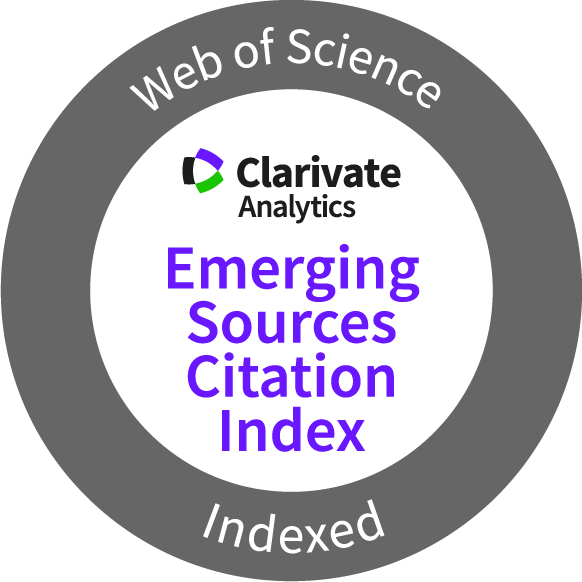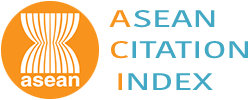Changes of Fatty Acid Profiles in Mushroom Corals (Fungia fungites) After Short-Term Laboratory Exposure to Anti-Fouling Herbicide Diuron
Keywords:
Diuron, Booster biocides, Fatty acids composition; Coral reef organisms, Water qualityAbstract
There is a great concern about the recent use of new anti-fouling chemicals for boats and ships to the coral reef health. Diuron is one of the new anti-fouling paints after the ban of organotin as an anti-fouling system (AFS) compound, but yet to be proven safe for the marine environment. Presently, we demonstrated the effects of Diuron on the fatty acid composition of hard coral species (Fungia fungites) in the laboratory. The corals were exposed to different doses of Diuron under short-term exposure (96 hr) and the fatty acid (FA) compositions of the coral tissues were determined using the gas chromatography technique. The fatty acid composition between fresh and control samples of F. fungites was significantly similar where both samples were dominated by Saturated FA (SAFA), followed by Polyunsaturated FA (PUFA) and Monounsaturated FA (MUFA). In contrast, the trends for exposed samples (20, 100 & 500 µg/L) of F. fungites showed a significant decrease (P<0.05) of SAFA, MUFA, and PUFA with species suffering more as the dose of diuron increased. As the level of dose increased, SAFA such as 16:0 was largely affected while unsaturated FA from ω3 and ω6 series showed a slight decrease in their composition. The decrease in fatty acid composition after Diuron exposure indicates that the anti-fouling chemical can affect corals and may impact their metabolism. The finding that Diuron significantly impacts coral tissue fatty acids and metabolism is crucial evidence for classifying marine water quality in sensitive habitats (Class 1) like coral reefs, which are widespread in Malaysian waters. This finding serves as a basis for incorporating Diuron anti-fouling as a parameter in the Malaysian Marine Water Quality Standard (MMWQS). These key policy reforms to protect coral reef ecosystems have multiple benefits for marine ecosystems and humans.
Downloads
Metrics
References
Abbott, A., Abel, P.D., Arnold, D.W. & Milne, A. 2000. Cost-benefit analysis of the use of TBT: The case for a treatment approach. Science of the Total Environment, 258(1-2): 5–19. DOI: https://doi.org/10.1016/S0048-9697(00)00505-2
Abdulkadir, S. & Tsuchiya, M. 2008. One-step method for quantitative and qualitative analysis of fatty acids in marine animal samples. Journal of Experimental Marine Biology and Ecology, 354(1): 1–8. DOI: https://doi.org/10.1016/j.jembe.2007.08.024
Ali, H.R., Arifin, M.M., Sheikh, M.A., Shazili, N.A.M., Bakari, S.S. & Bachok, Z. 2014. Contamination of diuron in coastal waters around Malaysian Peninsular. Marine Pollution Bulletin, 85(1): 287–291. DOI: https://doi.org/10.1016/j.marpolbul.2014.05.049
Ali, H.R., Safuan, C.D.M., Ariffin, M.M., Sheikh, M.A., Shazili, N.A.M., Afiq-Firdaus, A.M. & Bachok, Z. 2022. Changes of fatty acid composition in scleractinian coral. Malaysian Journal of Analytical Sciences, 26(4): 914-923.
Chesworth, J., Donkin, M. & Brown, M. 2004. The interactive effects of the antifouling herbicides Irgarol 1051 and Diuron on the seagrass Zostera marina (L.). Aquatic Toxicology, 66(3): 293–305. DOI: https://doi.org/10.1016/j.aquatox.2003.10.002
Department of Environment Malaysia. 2021. Malaysian marine water quality standards and index [WWW Document]. URL https://www.doe.gov.my/wp-content/uploads/2021/09/BOOKLET-MALAYSIAN-MARINE-WATER-QUALITY-STANDARDS-AND-INDEX-ENGLISH-VERSION.pdf (accessed 11.05.23).
Dafforn, K.A., Lewis, J.A. & Johnston, E.L. 2011. Antifouling strategies: History and regulation, ecological impacts and mitigation. Marine Pollution Bulletin, 62(3): 453-465. DOI: https://doi.org/10.1016/j.marpolbul.2011.01.012
Flemming, H.C. 2016. EPS—then and now. Microorganisms, 4(4): 41. DOI: https://doi.org/10.3390/microorganisms4040041
Flores, F., Marques, J.A., Uthicke, S., Fisher, R., Patel, F., Kaserzon, S. & Negri, A.P. 2021. Combined effects of climate change and the herbicide diuron on the coral Acropora millepora. Marine Pollution Bulletin, 169: 112582. DOI: https://doi.org/10.1016/j.marpolbul.2021.112582
Giacomazzi, S. & Cochet, N. 2004. Environmental impact of diuron transformation: A review. Chemosphere, 56(11): 1021-1032. DOI: https://doi.org/10.1016/j.chemosphere.2004.04.061
Harland, A.D., Navarro, J.C., Spencer Davies, P. & Fixter, L.M. 1993. Lipids of some Caribbean and Red Sea corals: total lipid, wax esters, triglycerides and fatty acids. Marine Biology, 117: 113-117. DOI: https://doi.org/10.1007/BF00346432
ICS&ISF. 2009. Overview of the international shipping industry. International Chamber of Shipping and International Shipping Federation, Web publication. URL http://www.marisec.org/shippingfacts/keyfacts/ (accessed 6.14.22).
Imbs, A.B., Demidkova, D.A., Latypov, Y.Y. & Pham, L.Q. 2007. Application of fatty acids for chemotaxonomy of reef-building corals. Lipids, 42: 1035-1046. DOI: https://doi.org/10.1007/s11745-007-3109-6
International Maritime Oragnisation. 2002. Anti-fouling systems [WWW Document]. URL https://wwwcdn.imo.org/localresources/en/OurWork/Environment/Documents/FOULING2003.pdf (accessed 11.5.23)
Jones, R.J. & Kerswell, A.P. 2003. Phytotoxicity of Photosystem II (PSII) herbicides to coral. Marine Ecology Progress Series, 261: 149-159. DOI: https://doi.org/10.3354/meps261149
Jones, R. 2005. The ecotoxicological effects of Photosystem II herbicides on corals. Marine DOI: https://doi.org/10.1016/j.marpolbul.2005.06.027
Pollution Bulletin, 51: 495–506.
Konstantinou, I.K. & Triantafyllos A.A. 2003. Photocatalytic transformation of pesticides in aqueous titanium dioxide suspensions using artificial and solar light : Intermediates and degradation pathways. Applied Catalysis B: Environmental, 42: 319–35. DOI: https://doi.org/10.1016/S0926-3373(02)00266-7
Kumar, M., Kumari, P., Gupta, V., Anisha, P.A., Reddy, C.R.K. & Jha, B. 2010. Differential responses to cadmium induced oxidative stress in marine macroalga Ulva lactuca (Ulvales, Chlorophyta). Biometals, 23: 315-325. DOI: https://doi.org/10.1007/s10534-010-9290-8
Lachs, L., Johari, N.A.M., Le, D.Q., Safuan, C.D.M., Duprey, N.N., Tanaka, K., Hong, T.C., Ory, N.C., Bachok, Z., Baker, D.M., Kochzius, M. & Shirai, K. 2019. Effects of tourism-derived sewage on coral reefs: Isotopic assessments identify effective bioindicators. Marine Pollution Bulletin, 148, 85-96. DOI: https://doi.org/10.1016/j.marpolbul.2019.07.059
Lewis, J.A. 1998. Marine biofouling and its prevention on underwater surfaces. Materials Science Forum 22: 41–61.
Malato, S., Blanco, J., Cáceres, J., Fernández-Alba, A.R., Agüera, A. & Rodrı́guez, A. 2002. Photocatalytic treatment of water-soluble pesticides by photo-Fenton and TiO2 using solar energy. Catalysis Today, 76(2-4): 209–220. DOI: https://doi.org/10.1016/S0920-5861(02)00220-1
Marine Department Malaysia. 2011. Malaysia Shipping Notice on the Implementation of International Convention on the Control of Harmful Anti-Fouling Systems on Ships, 2001 (AFS 2001) [WWW Document]. URL https://www.marine.gov.my/jlm/admin/assets/uploads/files/notis/353cf-msn272011afs.pdf (accessed 11.5.23).
Råberg, S., Nyström, M., Erös, M. & Plantman, P. 2003. Impact of the herbicides 2, 4-D and diuron on the metabolism of coral porites cylindrical. Marine Environmental Research, 56: 503-514. DOI: https://doi.org/10.1016/S0141-1136(03)00039-4
Mohd Safuan, C.D., Samshuri, M.A., Jaafar, S.N.T., Tan, H.C. & Bachok, Z. 2021. Physiological response of shallow-water hard coral Acropora digitifera to heat stress via fatty acid composition. Frontiers in Marine Science, 2021: 1187. DOI: https://doi.org/10.3389/fmars.2021.715167
Noufal, C.A.S.H. & Hassan, C.M.H.N. 2016. The impact of implementing the international convention on the control of harmful anti-fouling systems in ships (AFS convention) on the marine environment. Journal of Shipping and Ocean Engineering, 6: 57-63. DOI: https://doi.org/10.17265/2159-5879/2016.01.007
National Oceanic anad Atmospheric Administration. 2019. URL https://www.noaa.gov/education/resource-collections/marine-life/coral-reef-ecosystems (accessed 11.05.23)
Papina, M., Meziane, T. & Van Woesik, R. 2003. Symbiotic zooxanthellae provide the hostcoral Montipora digitata with polyunsaturated fatty acids. Comparative Biochemistry and Physiology Part B: Biochemistry and Molecular Biology, 135(3): 533-537. DOI: https://doi.org/10.1016/S1096-4959(03)00118-0
Safuan, C.D.M., Tan, H.S., Samshuri, M.A., Afiq-Firdaus, A.M. & Bachok, Z. 2023. Chemotaxonomy of reef building corals (family: Acroporidae) via fatty acid biomarkers. Biochemical Systematics and Ecology, 106: 104565. DOI: https://doi.org/10.1016/j.bse.2022.104565
Sathivel, S., Witoon, P., Casey, C.G., Joan, M.K. & Steven, L. 2002. FA Composition of Crude Oil Recovered from Catfish Viscera. Journal of the American Oil Chemists’ Society, 79(10): 989–992. DOI: https://doi.org/10.1007/s11746-002-0592-5
Schultz, M.P. 2007. Effects of coating roughness and biofouling on ship resistance and powering. Biofouling, 23(5-6): 331–341. DOI: https://doi.org/10.1080/08927010701461974
Steffens, W. 1997. Effects of variation in essential fatty acids in fish feeds on nutritive value of freshwater fish for humans. Aquaculture, 151(1-4): 97–119. DOI: https://doi.org/10.1016/S0044-8486(96)01493-7
Steinberg, P.D., De Nys, R. & Kjelleberg, S. 2002. Chemical cues for surface colonization. Journal of Chemical Ecology, 28(10): 1935–1951. DOI: https://doi.org/10.1023/A:1020789625989
Teece, M.A., Estes, B., Gelsleichter, E. & Lirman, D. 2011. Heterotrophic and autotrophic assimilation of fatty acids by two scleractinian corals, Montastraea faveolata and Porites astreoides. Limnology and Oceanography, 56(4): 1285-1296. DOI: https://doi.org/10.4319/lo.2011.56.4.1285
Watanabe, T., Yuyama, I. & Yasumura, S. 2006. Toxicological effects of biocides on symbiotic and aposymbiotic juveniles of the hermatypic coral Acropora tenuis. Journal of Experimental Marine Biology and Ecology, 339: 177–188. DOI: https://doi.org/10.1016/j.jembe.2006.07.020
West, K. & Van Woesik, R. 2001. Spatial and temporal variance of river discharge on Okinawa (Japan): inferring the temporal impact on adjacent coral reefs. Marine Pollution Bulletin, 42(10): 864–872. DOI: https://doi.org/10.1016/S0025-326X(01)00040-6
Wright, T. 2009. Marine Coatings Market. URL http://coatingsworld.com/articles/2009/05/marine-coatings-market.php/ (accessed 06.20.22).
Yonehara, Y. 2000. Recent topic on marine anti-fouling coatings. Bulletin of Society of the Sea Water Science, 54: 7-12.
Zhang, A.Q., Leung, K.M., Kwok, K.W., Bao, V.W. & Lam, M.H. 2008. Toxicities of antifouling biocide Irgarol 1051 and its major degraded product to marine primary producers. Marine Pollution Bulletin, 57(6-12): 575-586. DOI: https://doi.org/10.1016/j.marpolbul.2008.01.021
Published
How to Cite
Issue
Section
Any reproduction of figures, tables and illustrations must obtain written permission from the Chief Editor (wicki@ukm.edu.my). No part of the journal may be reproduced without the editor’s permission
Funding data
-
Ministry of Higher Education, Malaysia,Ministry of Higher Education, Malaysia
Grant numbers 56061




















